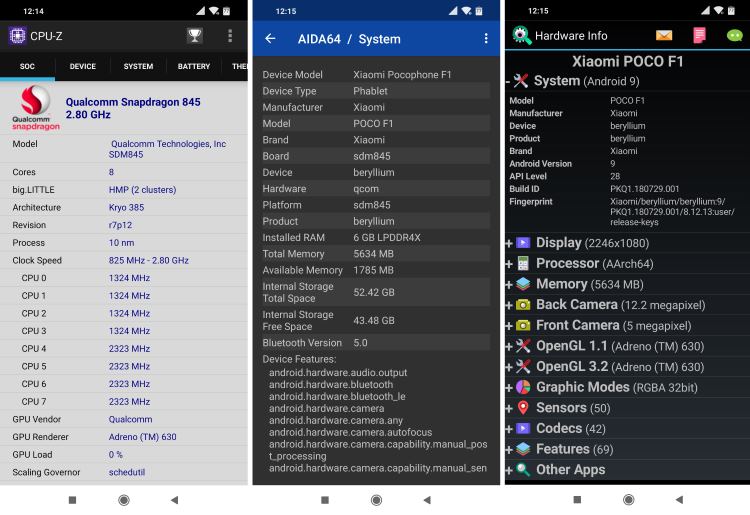App To Check Mac Hardware
If you need information about your hardware or to find out precisely what hardware is installed in your Mac, Apple provides Mac OS X Snow Leopard with an all-in-one hardware and software display tool, aptly named System Profiler, which you can find in the Utilities folder within your Applications folder. You can also reach the Profiler through the Apple menu. Just click About This Mac and then click the More Info button.
Mac Hardware Test
- Grammarly is a free download for iPad (and iPhone) from the App Store with in-app subscription purchases to unlock the full feature set. FTC: We use income earning auto affiliate links.
- May 15, 2015 The first thing that you should do before buying a used Mac is to find its exact model and verify the hardware it runs on. To do so, click on the Apple icon on the menu bar and then select About.
- Mar 22, 2017 Check your Mac with hardware diagnostics or AHT All recent models of Mac contain built-in hardware diagnostics, known as either Apple Hardware Test or Apple Diagnostics, according to the model. If you think your Mac has a hardware problem, or want to.
- Feb 25, 2020 After isolating an issue on your Mac to a possible hardware issue, you can use Apple Diagnostics to help determine which hardware component might be causing the issue. Apple Diagnostics also suggests solutions and helps you contact Apple Support for assistance. If your Mac was introduced before June 2013, it uses Apple Hardware Test instead.
SMART Utility is an application to scan the internal hardware diagnostics system of hard drives. SMART (Self-Monitoring Analysis and Reporting Technology) is a system built into hard drives by their manufacturers to report on various measurements (called attributes) of a hard drive's operation.The attributes can be used to detect when a hard drive is having mechanical or electrical problems. A Mac is complicated device, and sometimes you want or even need to find out a bit more about its internals. You may want to check if all your hardware is working correctly, or you may want to verify that your Mac’s hardware – or certain software protocols – are compatible with a device you want to use.
As with the folders in a Finder window in List View mode, you can expand or collapse each major heading that appears in a Profiler screen. Just click the triangle that appears to the left of each Contents heading to expand or collapse that heading.
The System Profiler major headings include
Hardware: This heading tells you volumes about your hard drives as well as specifics concerning your optical drives; modem; AirPort and Bluetooth hardware; graphics hardware; AC power settings; and any FireWire, eSATA, and USB devices connected to your system. This figure shows the information from a USB screen, with many of the devices expanded so that you can see them. (The text you see at the bottom half of the window is the detailed information on the item that’s selected.)
Display information about your Mac’s ports and connections.Network: This heading shows a listing of your network configuration, active network connections, and other assorted network paraphernalia. You’ll probably need this screen only when asked by a technical support person for the network protocols that you’re using, but it’s handy nonetheless. (You’ll find details on your network connection here that you can’t find anywhere else in Snow Leopard.)
Similar app like paint for mac. May 26, 2020 Paintbrush: A one-to-one Paint alternative for Mac Of course, some people might find Preview’s hidden photo editor to be too complex.
Software: Okay, this heading shows something useful to the average human being! This screen lists all the applications, fonts, and preferences recognized on your start-up volume, along with their version numbers. If you’re wondering whether you need to update an application with a patch file(to fix bugs in the software) or update a file from the developer, you can look here to check the current version number for the application. You also get a rather boring list of the extensions(or drivers) used by Mac OS X applications. Logs are usually valuable only to tech support personnel; they document recent lockups, application crashes, and even system crashes.
Mac App Store
The System Information app provides detailed specifications and other information about your Mac hardware and software, including your network and external devices. In some versions of OS X, this app is called System Profiler.

Choose Apple menu > About This Mac. This opens an overview of your Mac, including your Mac model, processor, memory, serial number, and version of macOS. To see the greater detail provided by the System Information app, click the System Report button.
To open System Information directly, press and hold the Option key and choose Apple menu > System Information. You can also use Spotlight to find System Information, or open it from the Utilities folder of your Applications folder.
App To Check Mac Hardware Test
System Information opens to a system report for your Mac:
Select items in the sidebar to see information about each item. For example, the Hardware section shows your Mac serial number, the Memory section shows how much RAM is installed in each internal memory slot, and the Software section shows which startup disk (boot volume) your Mac is using. Epson perfection 3170 scanner software for mac. You can use the Network section and Network Utility to learn more about your network.
Mac Apps Download
To have System Information read your serial number aloud, choose File > Speak Serial Number.
To save a copy of your system report, choose File > Save.
Mac Hardware Lookup
To learn more about System Information, choose Help > System Information Help.



